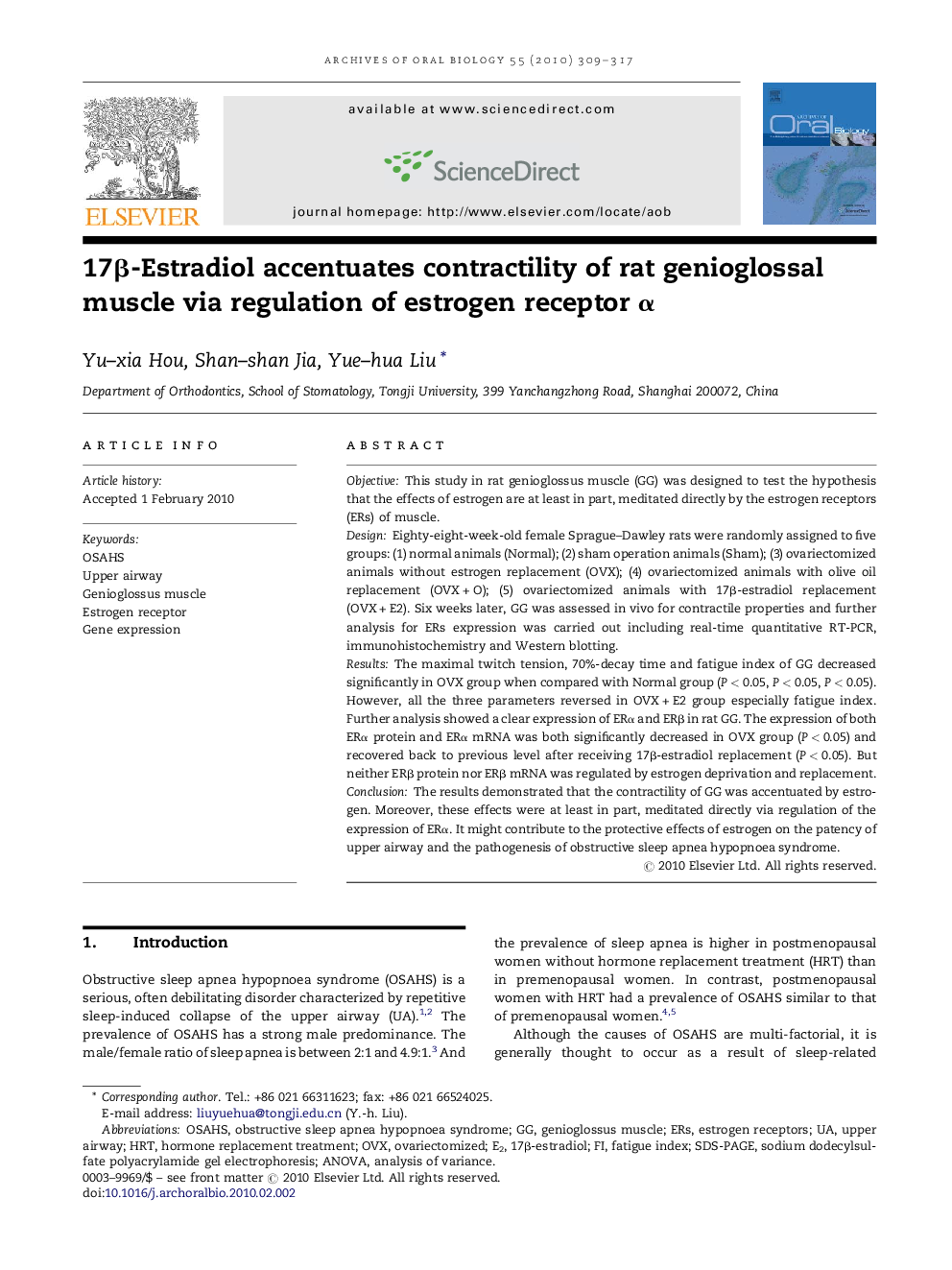| Article ID | Journal | Published Year | Pages | File Type |
|---|---|---|---|---|
| 3121472 | Archives of Oral Biology | 2010 | 9 Pages |
ObjectiveThis study in rat genioglossus muscle (GG) was designed to test the hypothesis that the effects of estrogen are at least in part, meditated directly by the estrogen receptors (ERs) of muscle.DesignEighty-eight-week-old female Sprague–Dawley rats were randomly assigned to five groups: (1) normal animals (Normal); (2) sham operation animals (Sham); (3) ovariectomized animals without estrogen replacement (OVX); (4) ovariectomized animals with olive oil replacement (OVX + O); (5) ovariectomized animals with 17β-estradiol replacement (OVX + E2). Six weeks later, GG was assessed in vivo for contractile properties and further analysis for ERs expression was carried out including real-time quantitative RT-PCR, immunohistochemistry and Western blotting.ResultsThe maximal twitch tension, 70%-decay time and fatigue index of GG decreased significantly in OVX group when compared with Normal group (P < 0.05, P < 0.05, P < 0.05). However, all the three parameters reversed in OVX + E2 group especially fatigue index. Further analysis showed a clear expression of ERα and ERβ in rat GG. The expression of both ERα protein and ERα mRNA was both significantly decreased in OVX group (P < 0.05) and recovered back to previous level after receiving 17β-estradiol replacement (P < 0.05). But neither ERβ protein nor ERβ mRNA was regulated by estrogen deprivation and replacement.ConclusionThe results demonstrated that the contractility of GG was accentuated by estrogen. Moreover, these effects were at least in part, meditated directly via regulation of the expression of ERα. It might contribute to the protective effects of estrogen on the patency of upper airway and the pathogenesis of obstructive sleep apnea hypopnoea syndrome.
